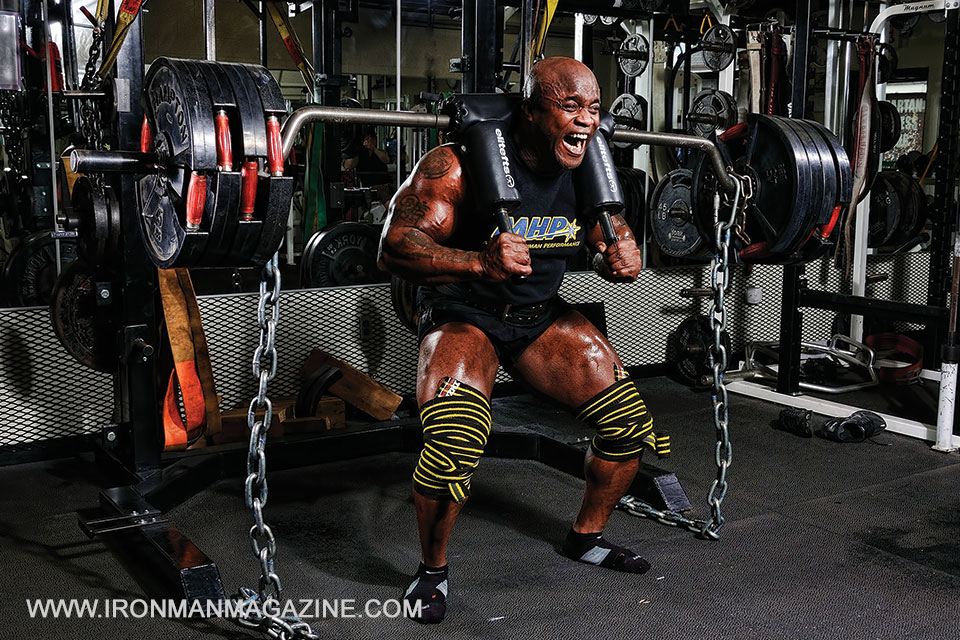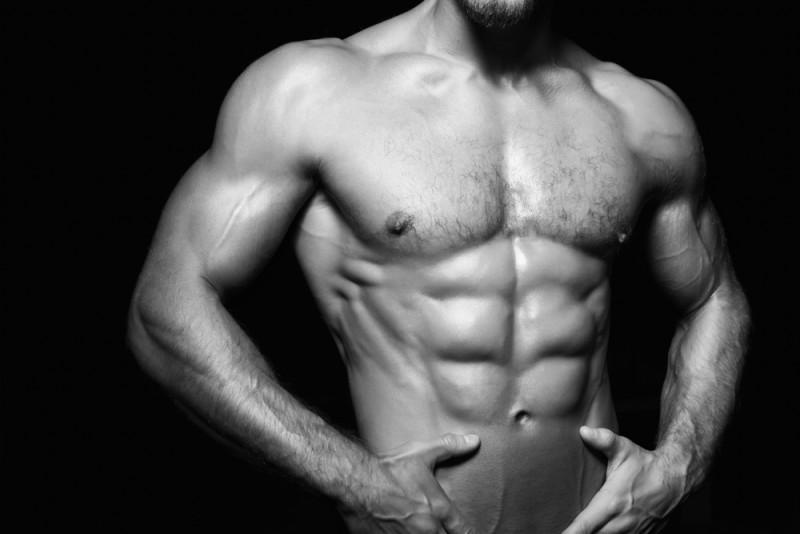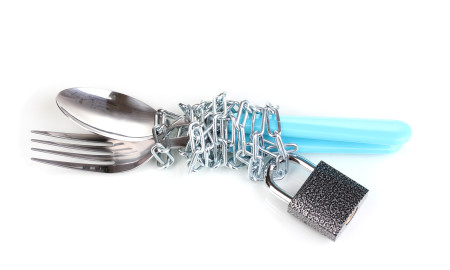


Q: I’ve been training for about four years, but my leg size and strength are lagging behind my upper body. I have a pretty good bench, and my shoulder press is strong, but I just can’t seem to bring up my legs. I have to admit I’ve mostly done leg presses up to now because I just can’t squat heavy without back pain. My back bothers me even when I press. Can you give me any tips for improving my squats?
A: It’s about time you got your head on straight and embraced squats for building big, strong legs! The leg press is fine as an adjunct exercise, but it simply can’t replace squats as a prime muscle builder for the quads, hams and glutes. Part of the problem is the range of motion and biomechanical design of a 45 degree leg press machine.
Think about it this way: When you sit on the damn machine, your hips are already bent at almost 90 degrees. That means the range of motion will be somewhat limited on the lowering part of the exercise—you can only come down until your thighs get close to your abdomen. If you have tight hamstrings, that will be nigh on impossible. As you probably know, reduced range of motion leads to less muscle fibers firing, which means less potential for muscle building.
Furthermore, the first thing that happens at the bottom, when you change from the eccentric, or lowering, phase to the concentric, or pushing, phase is that your erectors fire in order to stabilize your hips, which roll under as you bend your legs. The sudden erector firing often manifests itself in spasms or imbalance in the sacroiliac joint. You’ll immediately know when that happens because it’ll feel as if someone stabbed you in one side of your lower back.
So, leg pressing is not only an inopportune way to build legs, but it also can actually lead to lower-back problems. That brings us back to squats. The truth is, they’re not a magical exercise either. It takes time and constant practice to learn how to squat correctly, with proper technique—not to mention the ongoing battle with your ego as to how much weight is enough to force new growth without screwing up your lower back or knees.
One critical point is that there is no set form for “power-building” vs. “muscle building” on this exercise, contrary to popular opinion. In other words, doing close-stance, “high-bar” squats is not a key to building bigger quads, while wide-stance, “low-bar” squats do not necessarily enable you to put more weight on the bar. Sure, those points do apply to a certain extent, but they are more biomechanical issues rather than hard-and-fast rules.
For starters, you want to adjust the position of your feet to your body’s structure and not just because you are aiming for some end game. Try this technique to determine which position to try: Sit upright on the end of a flat bench. Space your feet about shoulder width apart and attempt to stand up. Chances are, with your feet at this spacing, your upper body will lean forward immediately as you rise from the bench. Sit down again, and spread your feet a couple of inches wider; then stand again. Here you will probably not lean forward so much. Keep spreading your feet a few inches at a time until you can stand up perfectly vertical without leaning forward at all. You will find that from that point on, as you spread your feet wider still, you will begin to lean forward again. That means you are too wide.
So, now that you know your stance, where do you carry the bar? It’s best not to go too high or too low on your shoulders. There is a spot on your lower shoulder girdle where you can place the bar and it crosses on the outside in the natural groove between your midtraps and your rear delts. That’s the perfect spot. Not only is it more comfortable to carry the bar there, but it also won’t make you lean forward excessively—which, incidentally, happens when you have the bar on the tops of your traps and carry it very low.
All that said, you may have lower-back strength and stability issues that still cause you pain while squatting. There are two things you can do: First, strengthen your lower back. Do hyperextensions on one of the old benches where your body is parallel to the floor when you’re at the top, fully extended body position.
Second, try the Safety Squat Bar. This is the bar that has two handles that point down alongside your shoulders on either side; the ends are bent and tapered for different weight balance. See the photo on the previous page of me using a Safety Squat Bar. The device was created specifically to keep the torso upright during squats. It’s a little hard to get used to it, but once you do, you’ll find that it doesn’t take a ton of weight to blast the crap out of your legs!
Enough instruction—now start squatting!






















You must be logged in to post a comment Login